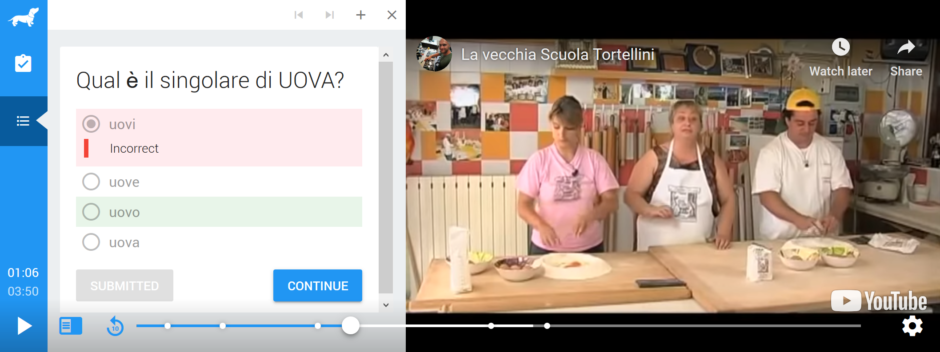How do you guide students through videos that you assign as part of their coursework? How do you help them focus on areas that an expert eye like yours would notice, but novice viewers might not? In a face-to-face class, you would probably pause the video, ask questions and engage students in a discussion. But how would you do it when students are viewing the videos on their own? How do you know that they have watched and understood the video? Interactive video tools such as PlayPosit and Edpuzzle might help. They can help you turn video-watching into an active learning experience for your students.
What is PlayPosit and how does it work?
PlayPosit is an online tool that allows professors to prepare video clips and encourage student engagement by:
- adding text or image slides to provide context or additional information,
- inserting multiple-choice, multiple-answer and fill-in-the-blank questions to check for understanding,
- giving instant feedback on some questions,
- incorporating polling, discussion and reflection questions as students are watching the videos.
PlayPosit “bulbs” (video lessons) can be created with videos already on the web (on YouTube, Vimeo, TED, PBS, Discovery, etc.) or with videos uploaded by professors or students. The videos will pause at specific points designated by their creators and wait for viewers’ to respond. Bulbs can be shared publicly or privately through links or embedded into Blackboard and other websites. Professors can see students’ answers and receive information about how many times and how much time students spent viewing the videos. Video lessons can be assigned to students as part of flipped, hybrid or online courses.
Who is using PlayPosit at Hunter?
Professor Erika Mazzer has created grammar review activities for her Italian language classes. She chooses clips with authentic language (music videos, cooking shows) and helps students recognize and practice the grammar structures that they are learning. She adds explanatory notes and poses questions that students must answer before they can continue watching the video. She asks students to view the videos as many times as they want and does not record their answers. You can see one of Erika’s PlayPosit bulbs about making pasta here.
Professor Robert Dottin of Biological Sciences has also used PlayPosit. For his hybrid and online classes in Genomics, he selects TED talks and YouTube videos relevant to course content, shortens them using PlayPosit tools for skipping segments, and asks students to make predictions or check their understanding while watching the recordings. Sometimes, students watch the videos on their own to prepare for more difficult class material. Other times, they watch them to review and consolidate learning. PlayPosit allows testing after multiple reviews or alternatively, without review, which demands more focused learning on first viewing. Students are asked to create accounts on PlayPosit so Robert and his team (Saymon Akther, Dr. Nataly Shtraizent and Dr. Claudia Cosentino) can monitor individual student performance and assess the efficacy of individual questions. Playposit provides additional modalities–visual, auditory and learner-centered tempos–to complement text and still images of conventional materials.
How do I get started with PlayPosit?
You can watch a PlayPosit bulb about PlayPosit and try creating a video lesson yourself after signing up for a free account on their website. Video tutorials on adding a video and adding interactive components can be found here.
Edpuzzle and PlayPosit are very similar tools. A blog post compares the features of the them. As always, the educational technologists at the Center for Online Learning are happy to consult with you and help you select the tool for a pedagogical challenge that you might have. You can reach us at ttlg@hunter.cuny.edu.




Comments are closed.